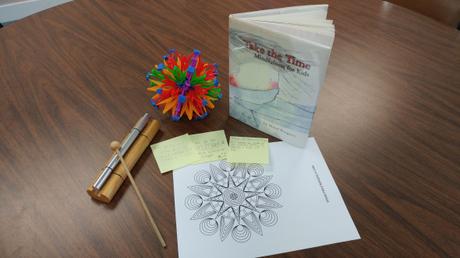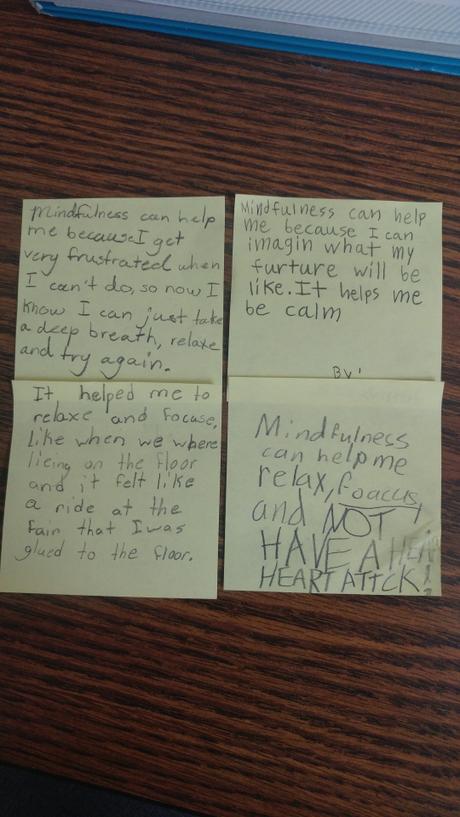When I returned to school after missing the first 8 weeks to take care of my nugget, I spent a lot of time trying to catch up. I’m still catching up. But one thing I couldn’t wait to get back into – visiting classrooms to do lessons! Still, I had to figure out how to start, since my beginning of the year wasn’t the beginning for everyone else (Does that even make sense? Sorry, I’ve got the mom brain).

Anyway, I landed on mindfulness. Why? I am often incorporating mindfulness techniques in my individual sessions with students, and even in some form during classroom lessons. Basically, my students need it! And I decided it was best to teach it more explicitly to 100% of my students.
Here’s what I did:
To keep things simple, I introduced the topic in all K-6 classrooms, and stuck to doing 3 basic mindfulness activities.
- Mindful moment – we practiced keeping our bodies still and quiet while we listened to silence. I called it a listening game that began with a chime sound, and challenged them to listen to the chime as long as they could hear it, and then to stay quiet for a while longer to listen to any sounds in the room. They shared what they heard after the game was over, and we discussed if staying still and quiet was hard for any of them, and it was!
- Deep breathing – I used my mini sphere ball to help with the inhale/exhale rhythm. I knew this was going to be difficult for some of my students to do without getting silly, so I instructed them to just bring their focus back to the ball and no one else.
- Relaxation – in the younger grades, I played relaxing music while they each colored their own mandala however they wished. In most classes, this was the activity that really seemed to bring their energy to a nice, calm state. In the older grades, I played relaxing music while I read a guided imagery exercise about a magic carpet. The students could sit or lay around the room however they were comfortable.
There were of course some variations in what I did depending on the grade level. In K-1, I had the students do belly breathing while laying flat on the floor and watch their hands rise and fall with each deep breath. In K-3, I read the very short story called Take the Time by Maude Roegiers to help us talk about how mindfulness can help themselves feel better. And in grades 4-6, students completed a stressed vs mindful emotions worksheet, to help us discuss how mindfulness strategies can help them reduce stress and focus on what’s important.
Also in grades 4-6, I asked each student to do an “exit ticket” by writing on a post-it about how mindfulness can help them. This was a way to summarize the lesson, see what they learned (what “stuck” with them), and to use as evidence about why mindfulness is important for our students to learn and practice. I have been blown away by many of their thoughtful responses!


While I was a bit worried how the lessons would go; if students or teachers would think it was silly or a waste of time, I have been very impressed so far! Many students have thanked me for the lesson and said they wish they could do these things everyday (which I tell them they can, of course!), and many teachers have enjoyed the calmness of the lesson and asked for more mindfulness resources to continue to use with their students.
If you would like a copy of the lesson plans I created with ASCA standards and the purpose/skills listed, please click on each link below:
Mindfulness grades 2-3
Mindfulness grades 4, 5, 6
If you would like access to free mandalas to print and color, go here: printmandala.com.
These lessons have been so much fun to teach, and leave me with a calm feeling too! Definitely a win-win! Hope you enjoyed reading and find these resources helpful.🙂

